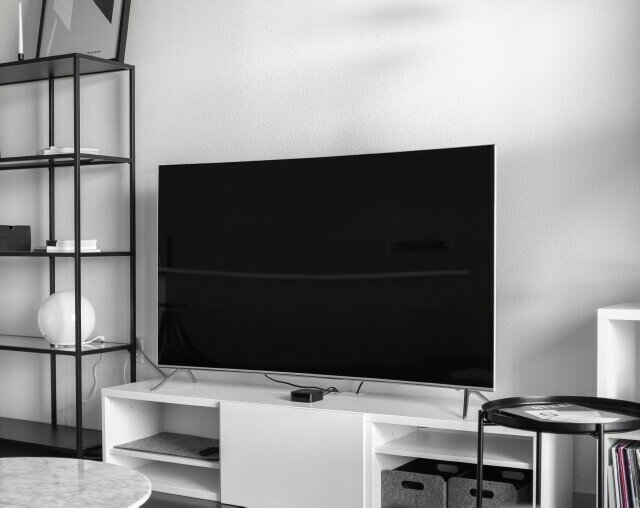FreeWheel and Simpli.fi Partner for Programmatic CTV

As connected TV (CTV) viewing accelerated during the pandemic, translating into a heightened search for quality entertainment, reaching key audiences across these new endpoints within a rapidly fragmented ecosystem has been a growing challenge for advertisers, especially smaller ones. To serve their needs, Comcast's FreeWheel and programmatic advertising leader Simpli.fi have teamed up to offer FreeWheel's Strata agency partners the ability to access programmatic connected TV. By working with Simpli.fi, agencies can access the connected TV marketplace through Simpli.fi’s relationships with exchanges and direct premium publisher integrations, enabling agencies and advertisers of all sizes to easily execute and manage household-targeted connected TV campaigns across different vendors and geographies.
For Mark McKee, FreeWheel's U.S. chief revenue officer, the importance of this partnership is clear. "The FreeWheel Strata platform has about 1200 agencies, largely local agencies that transact across all formats from print to TV to digital," he explained. "With all this fragmentation, we focused on how we could make the process easier for those who use [it]. One of the partners that we identified is Simpli.fi, recognizing the role that they play and the offerings that they bring to this very tailored group of buyers and agencies."
The reception from the marketplace has been impressive. "We have more than 200 clients that have taken advantage of the integration with Simpli.fi," McKee said.
"The biggest change we've seen in the last 12 months in programmatic connected TV advertising is the increase in high-quality inventory," added Simpli.fi's CEO and Co-Founder Frost Prioleau. "We were starting to see increased inventory before the pandemic that just accelerated throughout the pandemic. With more high-quality inventory available, advertisers are able to target precise audiences at a scale that they haven’t seen before. This targeting at scale, coupled with attribution that enables direct measurement of increases in web site conversions, foot traffic, and other metrics, is what is driving the growth of connected TV advertising.”
When McKee looks at the current TV marketplace and how it has evolved over the past couple of years, he sees that "there are a few areas of priority that have had ripple effects, with audience and automation getting the greatest amount of focus," he said. "Connected TV and the rise of direct-to-consumer offerings over the last two years has really catapulted adoption of new forms of TV and given rise to more fragmentation, so the need for consistency, how people buy and sell, is something of great importance."
McKee noted that the partnership with Simpli.fi enables small and local advertisers "to look at their audiences in a much more holistic fashion and plan and execute against them. From a measurement and data perspective, the Simpli.fi product does a great job of automating the buying and execution process as well as the management of it."
FreeWheel worked with Simpli.fi to create a custom "mini-market" order form directly in the Strata platform offering agencies more choices and control throughout the entire buying process. This feature enables buyers to select pre-packaged inventory packages from Simpli.fi as well as specify granular audience, pricing and geo-targeting data points -- all without leaving their existing workflow.
"Agencies and other media-buying organizations need tools to be more effective and efficient," Prioleau added. "Strata does a great job across many of the pieces. Our partnership enables agencies to extend those efficiencies into their programmatic buying of connected TV with workflow that is very similar to how they buy linear TV, and to achieve efficiencies with other digital formats like mobile and display."
When asked about what the future might bring, both McKee and Prioleau were circumspect.
"Programmatic connected TV will continue to grow quickly, and buyers will look for ways to integrate their connected TV and linear TV buys," Prioleau predicted. "Buyers will be looking for tools that help them buy seamlessly across all TV formats, whether that's streaming, live linear or some other format, and being able to not only target audiences across all those but also cap frequency and measure and deliver attribution across all TV types."
"The growth of addressability both on linear and digital is going to fundamentally change the way TV is bought and sold," McKee replied. "This will require a lot of creative development and innovation because it's really changing the workflow that everyone currently has, whether it is the home-grown system that has been developed or the technology solutions they use today. It will make a lot of the convergence components that Frost mentions much more automated."
According to McKee, this is vital because without the full roll-out of automation, addressability won't scale. "The ability to say, 'I reached this audience and it converted or drove the ROI that I wanted' will become easier over the next two to five years," he concluded.
Click the social buttons above or below to share this content with your friends and colleagues.
The opinions and points of view expressed in this content are exclusively the views of the author and/or subject(s) and do not necessarily represent the views of MediaVillage.com/MyersBizNet, Inc. management or associated writers.


